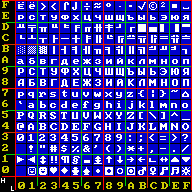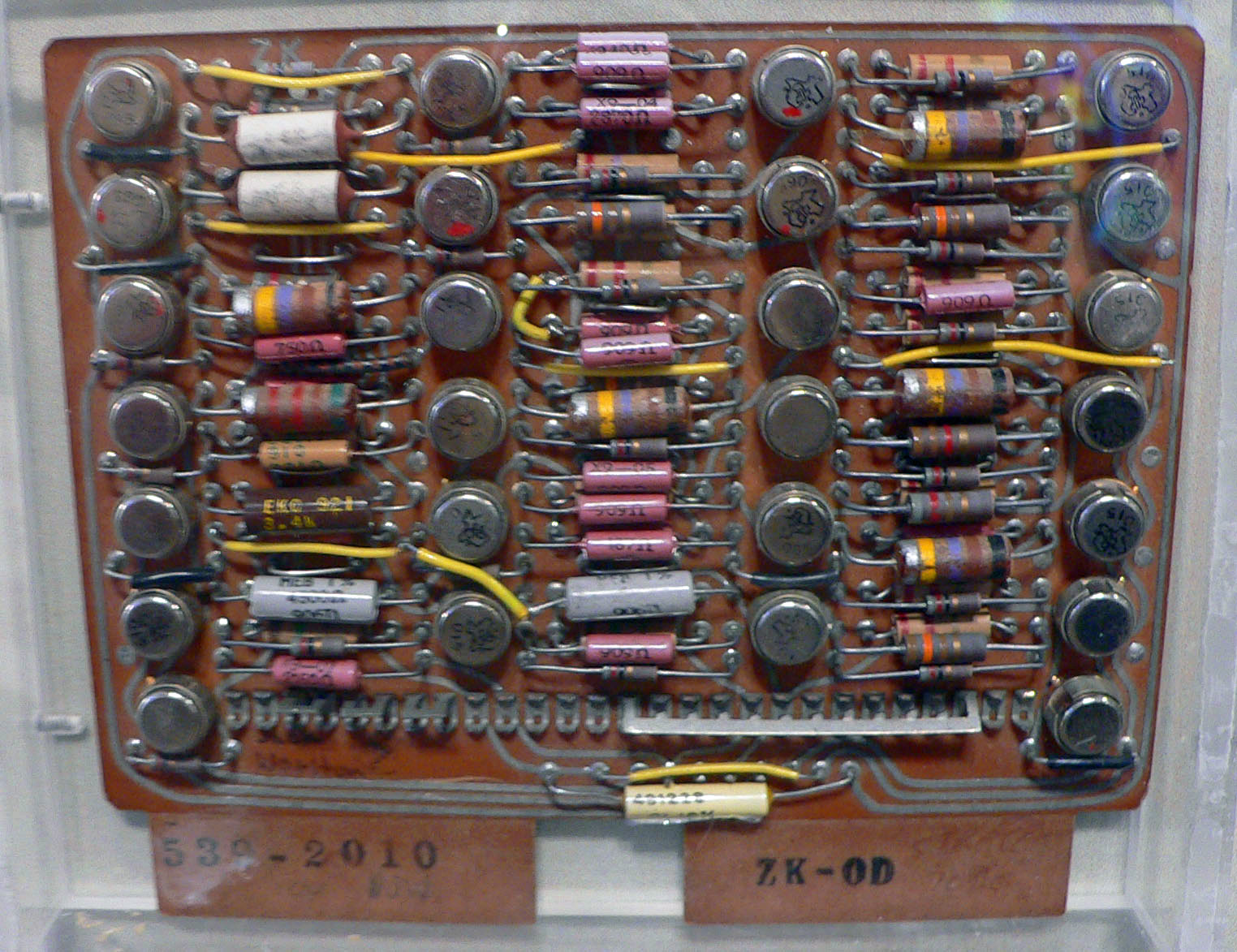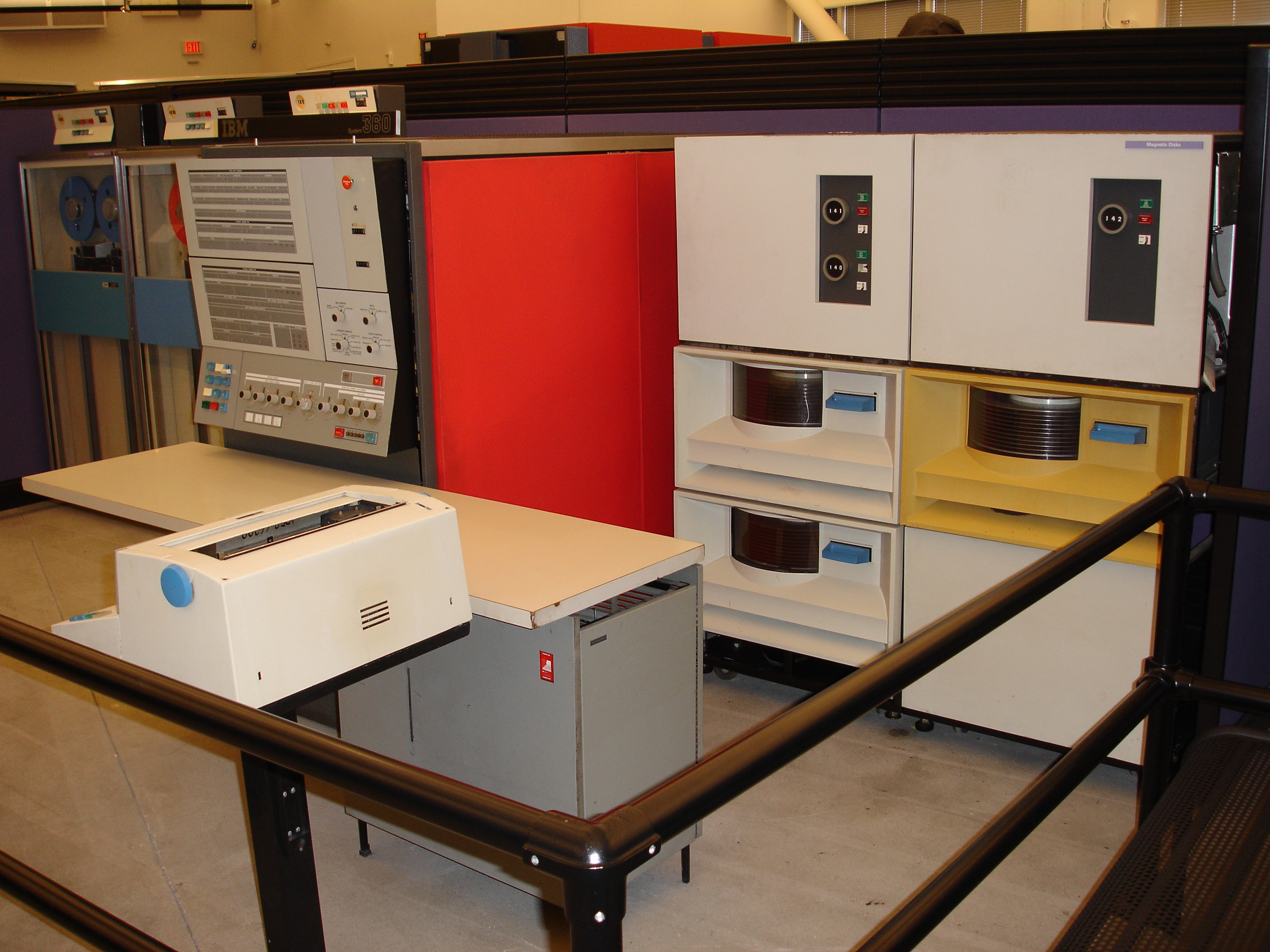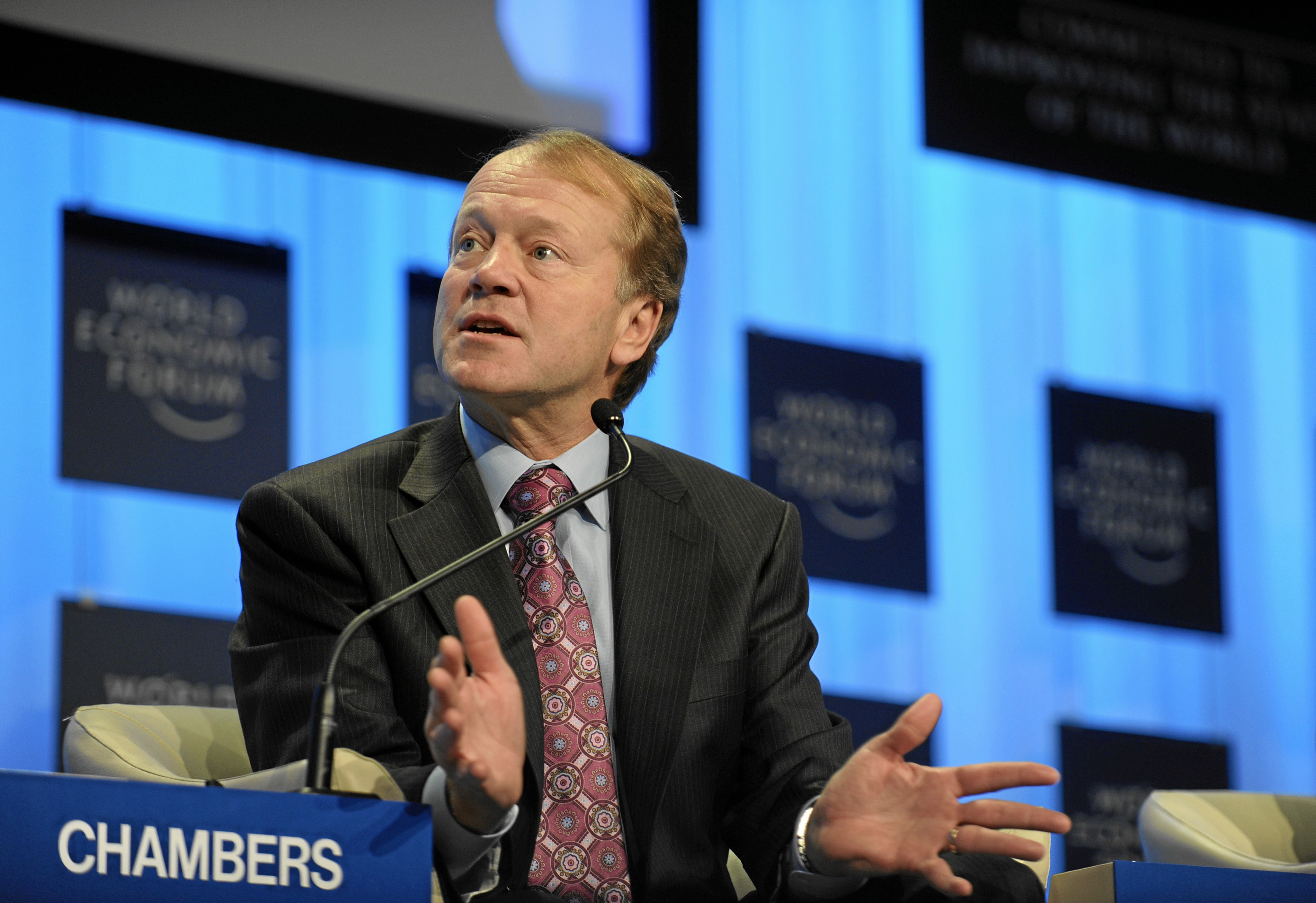|
Hextet
In computing, a hextet, or a ''chomp'', is a sixteen-bit aggregation, or four nibbles. As a nibble typically is notated in hexadecimal format, a hextet consists of 4 hexadecimal digits. A hextet is the unofficial name for each of the 8 blocks in an IPv6 address. A hextet is also referred to as a segment, in some documentation. History Bob Bemer suggested the use of hextet for 16-bit groups in 2000. In 2011 an Internet Draft explored various alternatives for hextet such as ''quibble'', short for "quad nibble". In response to this draft, author Trefor Davies suggested the use of the word ''chomp'' because it is in line with the current denominations ''bit'', ''nibble'', ''byte''. ''Hextet'' would more properly describe a 6-bit aggregation, whereas the exact term for 16 bits should be ''hexadectet'', directly related to the term octet (for 8 bits). However, because it is harder to pronounce, the short form ''hextet'' is used—in analogy to how ''hex'' is commonly used as an abbre ... [...More Info...] [...Related Items...] OR: [Wikipedia] [Google] [Baidu] |
Nibble
In computing, a nibble, or spelled nybble to match byte, is a unit of information that is an aggregation of four- bits; half of a byte/ octet. The unit is alternatively called nyble, nybl, half-byte or tetrade. In networking or telecommunications, the unit is often called a semi-octet, quadbit, or quartet. As a nibble can represent sixteen () possible values, a nibble value is often shown as a hexadecimal digit (hex digit). A byte is two nibbles, and therefore, a value can be shown as two hex digits. Four-bit computers use nibble-sized data for storage and operations; as the word unit. Such computers were used in early microprocessors, pocket calculators and pocket computers. They continue to be used in some microcontrollers. In this context, 4-bit groups were sometimes also called characters rather than nibbles. History The term ''nibble'' originates from its representing half a byte, with ''byte'' a homophone of the English word ''bite''. In 2014, David B. Be ... [...More Info...] [...Related Items...] OR: [Wikipedia] [Google] [Baidu] |
IBM Stretch
The IBM 7030, also known as Stretch, was IBM's first transistorized supercomputer. It was the fastest computer in the world from 1961 until the first CDC 6600 became operational in 1964."Designed by Seymour Cray, the CDC 6600 was almost three times faster than the next fastest machine of its day, the IBM 7030 Stretch." Originally designed to meet a requirement formulated by Edward Teller at Lawrence Livermore National Laboratory, the first example was delivered to Los Alamos National Laboratory in 1961, and a second customized version, the IBM 7950 Harvest, to the National Security Agency in 1962. The Stretch at the Atomic Weapons Research Establishment at Aldermaston, England was heavily used by researchers there and at AERE Harwell, but only after the development of the S2 Fortran compiler which was the first to add dynamic arrays, and which was later ported to the Ferranti Atlas of Atlas Computer Laboratory at Chilton. The 7030 was much slower than expected and faile ... [...More Info...] [...Related Items...] OR: [Wikipedia] [Google] [Baidu] |
O'Reilly Media
O'Reilly Media, Inc. (formerly O'Reilly & Associates) is an American learning company established by Tim O'Reilly that provides technical and professional skills development courses via an online learning platform. O'Reilly also publishes books about programming and other technical content. Its distinctive brand features a woodcut of an animal on many of its book covers. The company was known as a popular tech conference organizer for more than 20 years before closing the live conferences arm of its business. Company Early days The company began in 1978 as a private consulting firm doing technical writing, based in the Cambridge, Massachusetts area. In 1984, it began to retain publishing rights on manuals created for Unix vendors. A few 70-page "Nutshell Handbooks" were well-received, but the focus remained on the consulting business until 1988. After a conference displaying O'Reilly's preliminary Xlib manuals attracted significant attention, the company began increas ... [...More Info...] [...Related Items...] OR: [Wikipedia] [Google] [Baidu] |
Cisco Press
Cisco Press is a publishing alliance between Cisco Systems and Pearson Education Pearson Education, known since 2011 as simply Pearson, is the educational publishing and services subsidiary of the international corporation Pearson plc. The subsidiary was formed in 1998, when Pearson plc acquired Simon & Schuster's educatio ..., the world's largest education publishing and technology company which is part of Pearson plc. Cisco Press distributes its titles through traditional resellers as well as through the O'Reilly Online Learning e-reference service. Cisco Press allows Cisco Systems to publish books about Cisco networking technology, as well as certification study materials. References External links * Book publishing companies based in Indiana Pearson plc Publishing companies established in 1996 {{Ict-company-stub ... [...More Info...] [...Related Items...] OR: [Wikipedia] [Google] [Baidu] |
UNICODE
Unicode or ''The Unicode Standard'' or TUS is a character encoding standard maintained by the Unicode Consortium designed to support the use of text in all of the world's writing systems that can be digitized. Version 16.0 defines 154,998 Character (computing), characters and 168 script (Unicode), scripts used in various ordinary, literary, academic, and technical contexts. Unicode has largely supplanted the previous environment of a myriad of incompatible character sets used within different locales and on different computer architectures. The entire repertoire of these sets, plus many additional characters, were merged into the single Unicode set. Unicode is used to encode the vast majority of text on the Internet, including most web pages, and relevant Unicode support has become a common consideration in contemporary software development. Unicode is ultimately capable of encoding more than 1.1 million characters. The Unicode character repertoire is synchronized with Univers ... [...More Info...] [...Related Items...] OR: [Wikipedia] [Google] [Baidu] |
Octet (computing)
The octet is a unit of digital information in computing and telecommunications that consists of eight bits. The term is often used when the term '' byte'' might be ambiguous, as the byte has historically been used for storage units of a variety of sizes. The term ''octad(e)'' for eight bits is no longer common. Definition The international standard IEC 60027-2, chapter 3.8.2, states that a byte is an octet of bits. However, the unit byte has historically been platform-dependent and has represented various storage sizes in the history of computing. Due to the influence of several major computer architectures and product lines, the byte became overwhelmingly associated with eight bits. This meaning of ''byte'' is codified in such standards as ISO/IEC 80000-13. While ''byte'' and ''octet'' are often used synonymously, those working with certain legacy systems are careful to avoid ambiguity. Octets can be represented using number systems of varying bases such as ... [...More Info...] [...Related Items...] OR: [Wikipedia] [Google] [Baidu] |
Tape Drive
A tape drive is a data storage device that reads and writes data on a magnetic tape. Magnetic-tape data storage is typically used for offline, archival data storage. Tape media generally has a favorable unit cost and long archival stability. A tape drive provides sequential access storage, unlike a hard disk drive, which provides direct access storage. A disk drive can move to any position on the disk in a few milliseconds, but a tape drive must physically wind tape between reels to read any one particular piece of data. As a result, tape drives have very large average access times. However, tape drives can stream data very quickly off a tape when the required position has been reached. For example, Linear Tape-Open (LTO) supports continuous data transfer rates of up to 360 MB/s, a rate comparable to hard disk drives. Design Magnetic-tape drives with capacities of less than one megabyte were first used for data storage on mainframe computers in the 1950s. , capac ... [...More Info...] [...Related Items...] OR: [Wikipedia] [Google] [Baidu] |
IBM System 360
The IBM System/360 (S/360) is a family of mainframe computer systems announced by IBM on April 7, 1964, and delivered between 1965 and 1978. System/360 was the first family of computers designed to cover both commercial and scientific applications and a complete range of applications from small to large. The design distinguished between architecture and implementation, allowing IBM to release a suite of compatible designs at different prices. All but the only partially compatible Model 44 and the most expensive systems use microcode to implement the instruction set, featuring 8-bit byte addressing and fixed-point binary, fixed-point decimal and hexadecimal floating-point calculations. The System/360 family introduced IBM's Solid Logic Technology (SLT), which packed more transistors onto a circuit card, allowing more powerful but smaller computers. System/360's chief architect was Gene Amdahl, and the project was managed by Fred Brooks, responsible to Chairman Thomas J. Watson ... [...More Info...] [...Related Items...] OR: [Wikipedia] [Google] [Baidu] |
Werner Buchholz
Werner Buchholz (24 October 1922 – 11 July 2019) was a German-American computer scientist. After growing up in Europe, Buchholz moved to Canada and then to the United States. He worked for International Business Machines (IBM) in New York. In June 1956, he coined the term "byte" for a unit of digital information. In 1990, he was recognized as a computer pioneer by the Institute of Electrical and Electronics Engineers. Biography Early life Werner Buchholz was born on 24 October 1922 in Detmold, Germany. His older brother, Carl Hellmut and he were the sons of the merchant and his wife, . Due to the growing antisemitism in Detmold in 1936, the family moved to Cologne. Werner was able to go to England in 1938 where he attended school, while Carl Hellmut emigrated to the United States. Because of the threat of invasion in May 1940, Werner with other refugee students was interned by the British and later sent to Canada. With the help of the Jewish community in Toronto, he was rele ... [...More Info...] [...Related Items...] OR: [Wikipedia] [Google] [Baidu] |
Punch Card
A punched card (also punch card or punched-card) is a stiff paper-based medium used to store digital information via the presence or absence of holes in predefined positions. Developed over the 18th to 20th centuries, punched cards were widely used for data processing, the control of automated machines, and computing. Early applications included controlling weaving looms and recording census data. Punched cards were widely used in the 20th century, where unit record machines, organized into data processing systems, used punched cards for data input, data output, and data storage. The IBM 12-row/80-column punched card format came to dominate the industry. Many early digital computers used punched cards as the primary medium for input of both computer programs and data. Punched cards were used for decades before being replaced by magnetic storage and terminals. Their influence persists in cultural references, standardized data layouts, and computing conventions such as 80-c ... [...More Info...] [...Related Items...] OR: [Wikipedia] [Google] [Baidu] |
Cisco
Cisco Systems, Inc. (using the trademark Cisco) is an American multinational digital communications technology conglomerate corporation headquartered in San Jose, California. Cisco develops, manufactures, and sells networking hardware, software, telecommunications equipment and other high-technology services and products. Cisco specializes in specific tech markets, such as the Internet of things (IoT), domain security, videoconferencing, and energy management with products including Webex, OpenDNS, Jabber, Duo Security, Silicon One, and Jasper. Cisco Systems was founded in December 1984 by Leonard Bosack and Sandy Lerner, two Stanford University computer scientists who had been instrumental in connecting computers at Stanford. They pioneered the concept of a local area network (LAN) being used to connect distant computers over a multiprotocol router system. The company went public in 1990 and, by the end of the dot-com bubble in 2000, had a market capitali ... [...More Info...] [...Related Items...] OR: [Wikipedia] [Google] [Baidu] |
IPv6 Address
An Internet Protocol version 6 address (IPv6 address) is a numeric label that is used to identify and locate a network interface of a computer or a Node (networking), network node participating in a computer network using IPv6. IP addresses are included in the IPv6 header, packet header to indicate the source and the destination of each packet. The IP address of the destination is used to make decisions about routing IPv6 packet, IP packets to other networks. IPv6 is the successor to the first addressing infrastructure of the Internet, Internet Protocol version 4 (IPv4). In contrast to IPv4, which defined an IP address as a 32-bit value, IPv6 addresses have a size of 128 bits. Therefore, in comparison, IPv6 has a vastly enlarged address space. Addressing methods IPv6 addresses are classified by the primary addressing and routing methodologies common in networking: unicast addressing, anycast addressing, and multicast addressing. A unicast address identifies a single network int ... [...More Info...] [...Related Items...] OR: [Wikipedia] [Google] [Baidu] |





